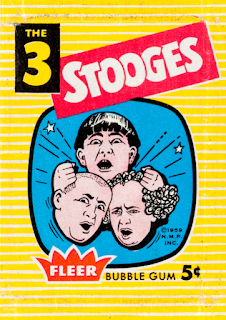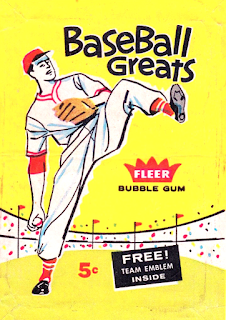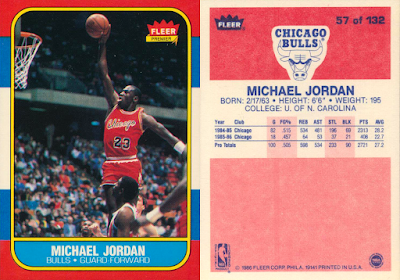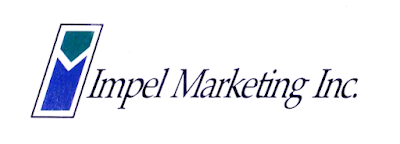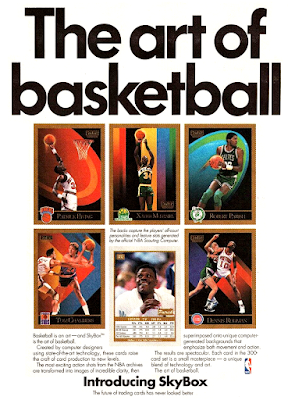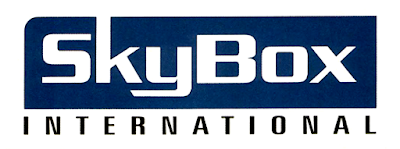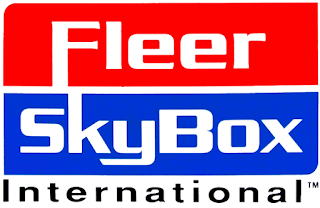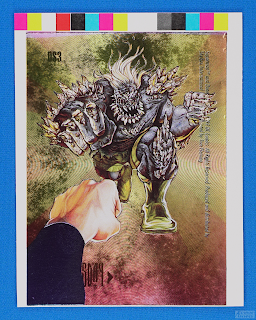The History of Fleer and SkyBox
The O. Holstein business was established in 1849 by Otto Paul Holstein, a
spice and extract merchant in Prussia. The Holstein family arrived in
Philadelphia, Pennsylvania, in May 1885. On August 6, 1885, daughter Pauline
married Franz Heinrich Fleer, an immigrant from Westphalia.
Frank Fleer partnered with Otto Holstein and formed the Frank H. Fleer &
Co. Inc. as a confectionary company. In 1886, Frank and his younger brother
Robert found early success selling Guru-Kola Gum and Pepsin Gum as digestive
aids. Early advertising campaigns and labels featured a portrait photograph
of Frank.
In 1888, Otto Holstein travelled through Europe to procure supplies of
almonds, gelatins, and lemon oils. Inspired by Jordan almonds, Robert
experimented with adding a thin candy coating to pieces of chicle gum. The
name "little chiclets" was first used on October 1, 1899, and a patent was
registered on
February 23, 1904 . Fleer introduced the Chiclets brand in the spring of 1904 and the
crunchy peppermint combination was a nationwide hit. The factory on Hamilton
Street was expanded after the first 60 days of sales.
In 1906, Fleer developed an unsuccessful bubble gum called Blibber-Blubber.
The product was abandoned due to the concoction being too sticky. The
bubbles splattered and sometimes required a solvent to remove.
Chiclets sales continued to rise. In 1908, an additional Fleer factory was
constructed in Toronto. On June 19, 1909, Frank Fleer and four other gum
manufacturers formed a $6.7 million trust called Sen-Sen Chiclet Company.
In December 1913, Fleer left the Sen-Sen board and established the Frank H.
Fleer Corporation with $150,000 in capital. In 1914, Sen-Sen Chiclet Company
and the Chiclets brand were absorbed by the American Chicle Company. Frank
H. Fleer died of a stroke on October 31, 1921. Fleer business operations
were led by son-in-law Gilbert Mustin.
Cigarette insert cards were introduced in April 1877 by New York
manufacturer Thomas H. Hall. Baseball cards were first sold with chewing gum
in 1888 by G&B Gum in New York and H.D. Smith & Co. in Cincinnati.
In 1923, Fleer advertised a set of 120 "famous person" strip cards. One card
was included with every five-cent pack of peppermint flavor Bobs and Fruit
Hearts chewing gum. The heart-shaped gums were similar to Chiclets.
The 1923 Fleer cards are listed as E241 in The American Card Catalog.
The set is comprised of five different strip card series including the W515
baseball set. Each card panel is printed with a Frank H. Fleer advertisement
on the back. A complete set of 120 Fleer cards has not been documented.
Based on observations of uncut sheets, it is estimated that only 110
different Fleer cards were actually distributed. Several cards feature
illustrations based on photographs copyrighted by Underwood & Underwood.
In August 1928, Fleer accountant Walter E. Diemer successfully refined a
bubble gum formula using latex and pink food coloring. Pink was the only
abundant color available and Diemer did not patent the recipe. According to
Diemer, ''I was doing something else and ended up with something with
bubbles.'' Pink remains a common color used for bubble gum products to this
day.
Market testing for the new invention began on December 26, 1928. Diemer
personally taught shopkeepers and salesmen how to blow bubbles. The International Gum Corp. of Massachusetts registered a patent for "Sure Pop Bubble Gum" in August 1929. "Dubble
Bubble Gum" debuted in early 1930 and sales for the one-cent chew exceeded $1.5
million in the first year. A series of six comic strip wrappers featuring
"Dub and Bub –The Dubble Bubble Twins" were copyrighted on September 20,
1930.
The first bubble gum trading cards began appearing soon after the
introduction of Dubble Bubble. One of the earliest known releases is the
baseball and film star series from Marble Bubble Gum Novelties of
Philadelphia (W553). In 1930, Fleer released a series of 16 die-cut discs as
premium prizes with
Whiz Bang
gum. The "Taka-Flyer" disc set features film actors and three Hall of Fame
baseball players: Goose Goslin, Lefty Grove, and Gabby Hartnett.
In 1935, Fleer released Cops and Robbers Gum (R35), a 35-card set
that included a stick of Dubble Bubble with each pack. The cards feature
perforated "Evidence" tabs that could be exchanged for a premium detective
badge.
By 1937, Blony bubble gum from Warren Bowman's Gum, Inc. dominated the market. Bowman claimed more than 60% of penny gum sales in America, a figure disputed by Fleer sales manager William B. Hunt.
By 1937, Blony bubble gum from Warren Bowman's Gum, Inc. dominated the market. Bowman claimed more than 60% of penny gum sales in America, a figure disputed by Fleer sales manager William B. Hunt.
During World War II,
latex and chicle supplies were diverted to the defense effort, sugar was
being rationed to households, and paper scrap drives were held to salvage
pulp. American Chicle, Beech-Nut, Leaf, Walla Walla, and Wrigley were
contracted by the government to supply gum for military rations. After
D-Day, gum from American and Canadian soldiers became widely popular
throughout the
Netherlands.
The Japanese occupation of the Malay peninsula cut off the crucial supply of
jelutong latex. Fleer was forced to temporarily suspend production of Dubble
Bubble from April 1943 until 1950. Limited shipments were sent to dentists
and drug stores. Legends of street prices reaching $1 per piece have been
reported.
In 1946, Fleer purchased a larger factory from the War Assets
Corporation located on North 10th Street in Olney, Philadelphia. Gilbert Mustin passed away on October 30, 1948. Ownership of the Frank H. Fleer Corp. was transferred to Norman P. Hutson, an engineer from Brooklyn. In a 1952 interview, Hutson stated that bubble gum was invented by Wm. J. Wischmann in Brooklyn and sold under the name "4X."
A new comic strip character named Pud was introduced in 1950. In 1968,
Dubble Bubble printed the one-thousandth comic wrapper.
-
Bazooka bubble gum was introduced by Topps Chewing Gum in July 1947.
Bowman Gum, Leaf,
Topps, and Swell released baseball card sets in 1948. An aggressive
competition arose over the image rights for professional athletes. In 1956,
Topps acquired the Bowman brand and player contracts for $200,000.
In 1959, Fleer released an 80-card series showcasing Ted Williams. The
exclusive deal removed the popular slugger from Topps sets. Fleer followed
with an
Indian series and a 96-card set for The Three Stooges. In
1960, Fleer released cards for the American Football League and a throwback
series of retired Baseball Greats.
Topps held exclusive rights to the National Football League and about 400
Major League Baseball players. In order to compete, Fleer offered athletes
$125 for a non-exclusive contract. In June 1961, Newsweek reported
the bubble gum business was worth an estimated $30 million per year and
Topps sales accounted for nearly half.
By 1964, Topps had signed nearly every active baseball player with around
6,500 exclusive contracts. In 1966, Topps forced the
Exhibit Supply Co. (ESCO)
to stop printing contracted players. In April 1975, Fleer filed antitrust
charges after being refused a license for baseball stickers.
On June 30, 1980, the Federal Trade Commission ruled that Topps had unfairly
restrained trade in the baseball card market. The U.S. Court of Appeals
overturned the decision in August 1981.
The Topps contracts contained exclusive rights to baseball cards sold with
gum or candy, so Fleer simply packaged cards with team logo stickers.
Donruss released a 1981 series that included a cardboard puzzle of Babe
Ruth.
Topps filed unsuccessful lawsuits against Fleer in 1982 and 1986 before
capitulating. The end of the two-decade baseball card monopoly allowed new
companies like Score and Upper Deck to enter the market. Topps stopped
including sticks of gum with baseball cards after 1991.
Fleer included a stick of Dubble Bubble inside each pack of basketball cards
from 1986–1989. Initially a sales flop, the 1986–87
Fleer NBA Basketball series is now sought after for containing the
Michael Jordan rookie card and other hall of fame inductees.
In 1989, Gilbert Mustin Jr. sold the Fleer Corporation to Charterhouse
Equity Partners for $75 million. The Charterhouse deal was led by former
Donruss executive Paul Mullan.
Impel Marketing Inc. was formed as a subsidiary of Brooke Group Ltd. on June
21, 1990. In October 1990, Impel released
Marvel Universe Trading Cards, a popular series featuring hologram
chase inserts. Similar sets followed for Walt Disney and
DC Comics
characters. Impel licensed various non-sport properties including
A Nightmare on Elm Street, G.I. Joe, Star Trek, and
Terminator 2: Judgement Day. The first sports release from Impel was
the 1990–91 Inaugural Edition of SkyBox NBA Basketball Cards.
Impel CEO Frank O'Connell was the former president of Reebok and former CEO of
HBO Video. In an interview with Wizard magazine, O'Connell explained
that the name Impel was not relevant to sports or entertainment. Testing
favored "skybox" as a recognizable term for the best seats in an arena. On
April 15, 1992, Impel Marketing rebranded as SkyBox International Inc.
Basketball legend Earvin "Magic" Johnson was signed as the first celebrity
spokesperson.
On July 24, 1992, Marvel Entertainment Group purchased Fleer from Charterhouse
for $265 million. In 1994, Fleer reported $38 million in gum sales and $245
million from trading cards. The combined sales from all retail trading card
companies in 1994 was more than $2 billion. Investor speculation and hype led
to larger print runs of cards, comic books, and
POGs.
On March 9, 1995, Marvel purchased SkyBox for $150 million. The card companies
were merged to form Fleer/SkyBox International, now holding major licenses
with the NBA, NFL, NHL, MLB, and NASCAR. Card sales began to drastically
decline following the MLB strike of 1994–1995 and the NBA lockout of 1995–1996.
On December 27, 1996, Marvel filed for Chapter 11 bankruptcy protection.
The Dubble Bubble plant in Olney, Philadelphia, was used to cut and collate
Fleer cards. Vice President of the Hobby Division Ted Taylor reported that, "a
lot of cards walked out the doors in lunch pails, briefcases and other such
carriers." Collectors commonly refer to stolen factory cards as
"backdoored." Entire cases had been taken from the plant through
inside sources. Although Fleer did not distribute to hobby dealers, complete
sets would appear in local card shops before the official release dates.
Production at the Dubble Bubble plant stopped on November 26, 1995.
Employees arrived after Thanksgiving weekend to find the gate locked. The
Onley factory was officially shut down on January 26, 1996. The closure was
featured in the April 9, 1996, broadcast of ABC News Nightline.
According to Fleer/SkyBox CEO Jeff Kaplan, "It was largely confectionary
driven and had little to do with the baseball strike." Dubble Bubble
production continued at a Fleer factory in Byhalia, Mississippi.
In 1998, the Dubble Bubble brand was purchased for $13 million by Concord
Confections in Canada. Concord was acquired by Tootsie Roll Industries in
August 2004 and the Dubble Bubble recipe was changed. Tootsie Roll introduced
the "Original 1928 Flavor" in 2015. The new Dubble Bubble wrappers featured 60 classic
Pud comic strips.
By 1999, the entire trading card industry had crashed. Marvel sold
Fleer/Skybox for $26 million to Rite Aid founder Alex Grass. The SkyBox
branding stopped appearing after 2000. The Upper Deck Company made an offer of
$25 million in 2003, but the Grass family declined. In 2005, Fleer/SkyBox
filed for bankruptcy with debt nearing $40 million. On July 15, 2005, the
Fleer/Skybox brand was auctioned to Upper Deck for only $6.1 million. The last
set issued by Fleer in 2005 was American Idol Season 4, featuring
Carrie Underwood.
On September 9, 2005, Fleer/SkyBox held a bankruptcy auction at the Radisson
Hotel in Mt. Laurel, New Jersey. Millions of cards and other memorabilia from
the Fleer and SkyBox archives were sold to the public. The massive sale
included autographs, errors, test proofs, uncut sheets, and unstamped
parallels.
A PDF catalog of items listed by the Continental Auction Group, Inc. can be
viewed here.
Since the auction, multiple examples of aftermarket serial number alterations
and counterfeits of rare sports cards have been identified. Collectors are
advised to conduct proper research on products produced by Fleer and SkyBox
from 1986–2005. Hobby experts at the
Blowout Cards Forums
have experience detecting trimmed cards and forgeries.
Chiclets are currently produced by Mondelez International, formerly Kraft
Foods. Dubble Bubble from Tootsie Roll is commonly seen in Major League
Baseball dugouts. The Marvel trading card license was acquired by Fanatics,
Inc. and the Topps brand in 2024.
The last baseball card series containing the Fleer branding was issued by
Upper Deck Entertainment in 2007. Fleer and SkyBox basketball releases
temporarily stopped after 2008–09. The Fleer name returned in 2011, followed
by SkyBox in 2015. On June 13, 2024, Upper Deck announced a partnership with
Warner Bros. Discovery Global Consumer Products. The Fleer and Skybox brands
will feature
DC Comics characters beginning in 2025.
-
"Advertising vs. Trust Methods." Printers' Ink, vol. 56, no. 3, 18 July
1906. pp. 18–22.
"A Chewing-Gum Campaign." Printers' Ink, vol. 47, no. 11, 15 June 1904.
p. 6.
Allen, Frank Hales.
"Penny Sales Pay Dollar Dividends."
Nation's Business, vol. 26, no. 8, August 1938, pp. 33–36, 68–69.
"Bubble Gum Fight Enters Round 2; Topps Defends Its Rights in Baseball-Card
Market."
The New York Times, 18 February 1964, p. 71.
"Bubble Trouble."
Newsweek, vol. 57, no. 26, 26 June 1961, pp. 73–74.
"Chewing Gum."
Nation's Business, vol. 26, no. 12, December 1938, p. 52.
Cook, Bonnie L. "Frank H. Mustin, 94, former Fleer bubble-gum company executive." The Philadelphia Inquirer, 14 March 2018.
Goodnough, Abby.
"W.E. Diemer, Bubble Gum Inventor, Dies at 93."
The New York Times, 12 January 1998, p. B7.
Hylton, J. Gordon.
"Baseball Cards and the Birth of the Right of Publicity: The Curious Case
of Haelen Laboratories v. Topps Chewing Gum."
Marquette Sports Law Review, vol. 12, no. 1, Rev. 273, 2001.
"Impel Marketing Inc."
Forbes, 15 October 1990, p. 156.
Isaacson, Kevin.
"Pinnacle praised, Topps and Fleer/SkyBox knocked, on 'Nightline'."
Comic Buyer's Guide, no. 1173, 10 May 1996, p. 6.
"Liggett to Change Its Focus With Shift From Cigarettes."
The New York Times, 20 June 1990. p. D1.
"Marvel to buy Fleer for $265 million."
United Press International, 24 July 1992.
"Marvel to buy rival trading-card maker."
New York Times, 10 March 1995. p. D3.
"New Corporations."
Oil, Paint and Drug Reporter, vol. 84, no. 27, 29 December 1913, p.
63.
Frank H. Fleer & Co.
"Chiclets."
US Patent 42,113. 1 Feb 1904.
"O. Holstein, Importers of Mexican Vanilla Beans."
Oil, Paint and Drug Reporter, vol. 36, no. 8, 21 August 1889, p. 46.
Shamus, Gareb.
"A Talk With President Frank O'Connell."
Wizard, no. 11, July 1992, pp. 18–21.
Swaab, Jr., Mayer M. "That Fleer Face." Printers' Ink, vol. 21, no.
11, 15 December 1897, p. 8.
Taylor, Ted.
"Fleer/SkyBox Sale Finally Goes Through."
Philadelphia Daily News, 4 February 1999.
Taylor, Ted.
"Time To Turn Out The Lights At Old Fleer Factory."
Philadelphia Daily News, 25 January 1996.
Timoner, Vic.
"Popping of Dubble Bubble Sweet Music to His Ears."
The Brooklyn Daily Eagle, 28 December 1952, p. 8.
"Trade Items." Oil, Paint and Drug Reporter, vol. 36, no. 12, 19
September 1888, p. 7.
United States District Court for the Southern District of New York.
Topps Chewing Gum, Inc. v. Major League Baseball Players Association, 641 F. Supp. 1179 (1986), 1 August 1986.
"Walter Diemer, Inventor of Bubble Gum in 1920s."
Chicago Tribune, 13 January 1998.
Woolley, Wayne.
"Fleer Closes Plant In City That Pioneered Bubble Gum."
Press-Republican, 4 December 1995, p. 7.
.png)
.png)

.png)
.png)
.png)
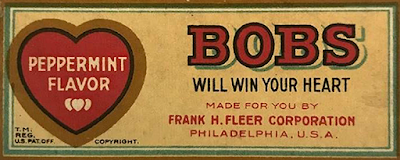

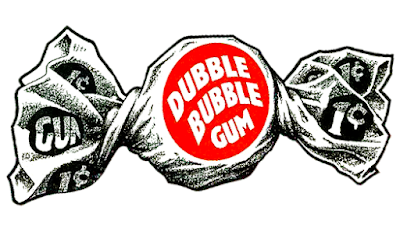
%20p%20541.png)
